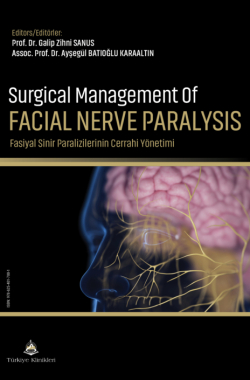Medicolegal Problems in Facial Paralysis
Gökhan ORALa
aİstanbul University-Cerrahpaşa, Cerrahpaşa Faculty of Medicine, Department of Forensic Medicine, İstanbul, Türkiye
Oral G. Medicolegal problems in facial paralysis. In: Sanus GZ, Batıoğlu Karaaltın A, eds. Surgical Management of Facial Nerve Paralysis. 1st ed. Ankara: Türkiye Klinikleri; 2022. p.265-8.
ABSTRACT
Facial paralysis is one of the common neurologic disorders. In this article, it is aimed to highlight the medicolegal problems that might occur with facial paralysis. This pathology, which creates a temporary or constant change in the face, can acquire a permanent character in a person. It is necessary to decide whether all the signs of facial paralysis are permanent or temporary one by one and in their entirety. After the damage in question has been carefully measured and identified, it is necessary to establish its reason-result relation with the alleged tort. The results of the evaluation also contribute to the determination of the person to whom the punishment will be given by affecting the amount of the punishment under the Criminal Code. In the same way, one of the grounds presented in divorce cases under the Civil Code-although it is rare-may be facial paralysis. Assessments in addition, have an important place in the provisions of private law.
Keywords: Facial paralysis; medicolegal; clinical evaluation
Kaynak Göster
Referanslar
- Yetter MF, Ogren FP, Moore GF, yonkers AJ. Bell's palsy: a facial nerve paralysis diagnosis of exclusion. Nebr Med J. 1990;75(5):109-16.
- Pillsbury hC 3rd. Pathophysiology of facial nerve disorders. Am J Otol. 1989;10(5):405-12.
- Limb CJ, Niparko JK. The acute facial palsies. In: Jackler RK, Brackmann DE, eds. Neurotology. 2nd ed. Philadelphia: Elsevier Mosby; 2005. p.1230-57. [Crossref]
- Adour KK. Current concepts in neurology: diagnosis and management of facial paralysis. N Engl J Med. 1982;307(6):348-51. [Crossref] [PubMed]
- Jayatilake D, Isezaki T, Teramoto y, Eguchi K, Suzuki K. Robot assisted physiotherapy to support rehabilitation of facial paralysis. IEEE Trans Neural Syst Rehabil Eng. 2014;22(3):644-53. [Crossref] [PubMed]
- Beurskens Ch, heymans PG. Positive effects of mime therapy on sequelae of facial paralysis: stiffness, lip mobility, and social and physical aspects of facial disability. Otol Neurotol. 2003;24(4):677-81. [Crossref] [PubMed]
- Ross B, Nedzelski JM, McLean JA. Efficacy of feedback training in longstanding facial nerve paresis. Laryngoscope. 1991;101(7 Pt 1):744-50. [Crossref] [PubMed]
- Beurskens Ch, heymans PG. Mime therapy improves facial symmetry in people with long-term facial nerve paresis: a randomised controlled trial. Aust J Physiother. 2006;52(3):177-83. [Crossref] [PubMed]

